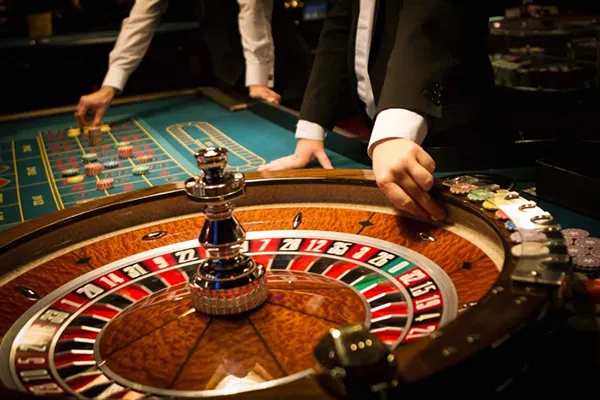
Can You Build a Successful Roulette Strategy?
Roulette, one of the most iconic casino games, has long intrigued players around the world. Its simplicity and the thrill it provides make it a popular choice for many, but the question remains: Can you build a successful strategy for roulette? In this article, we will explore the different approaches to creating a winning roulette strategy, examine popular systems, and discuss how understanding the game’s mechanics can impact your success.
Understanding Roulette: The Basics
To begin any roulette strategy, it’s essential to understand the game’s basic mechanics. Roulette consists of a wheel with numbered pockets, divided into two types: red and black, and a separate green pocket marked ‘0’ (or ’00’ in American roulette). The goal is to predict where the ball will land after the wheel is spun. The game is a game of chance, and each spin is independent of the previous one, meaning that the outcome of the game cannot be predicted based on past spins.
In European roulette, the wheel has 37 pockets, with numbers from 1 to 36 and a single green pocket for ‘0’. In American roulette, the wheel features an additional pocket, ’00’, bringing the total to 38 pockets. This difference leads to a higher house edge in American roulette, making the European version a more attractive option for players looking to maximize their chances.
The objective of the game is to predict the number or range of numbers on which the ball will land after the wheel is spun. Players can place different types of bets, including inside bets (on specific numbers) and outside bets (on larger groups of numbers such as red or black, odd or even, etc.). The odds and payouts vary based on the type of bet placed.
Types of Roulette Games
There are several variations of roulette, with the two most popular being European and American roulette. European roulette has 37 pockets, while American roulette features 38 pockets due to the extra ’00’ pocket. This slight difference impacts the house edge and can influence the effectiveness of any strategy you use. The house edge in European roulette is about 2.7%, whereas American roulette has a house edge of 5.26% due to the additional ’00’ pocket. This means that players have a slightly better chance of winning in European roulette compared to the American version. Understanding these odds is key to making informed decisions when choosing which version of the game to play.
There is also French roulette, which is similar to European roulette but with a few rule variations. The French version offers the ‘La Partage’ and ‘En Prison’ rules, which give players a chance to recover half of their even-money bets if the ball lands on ‘0’. This effectively reduces the house edge to around 1.35%, making it the best option for players looking to maximize their chances of winning.
Popular Roulette Strategies: Do They Work?
Over the years, many players have tried various strategies in an attempt to beat the roulette wheel. The most famous among these include the Martingale, Fibonacci, and Labouchère systems. Each of these strategies aims to manage bets in a structured way, hoping to recover losses and make a profit. While these strategies can work in the short term, they all come with their own set of risks and limitations.
The Martingale system is the most well-known roulette strategy. It involves doubling your bet after each loss, with the goal of recovering all previous losses when you eventually win. While this can be effective in the short term, it requires a large bankroll and can lead to substantial losses if a losing streak continues for too long. The primary risk of the Martingale system is that it can quickly deplete your funds if you encounter a series of consecutive losses, which is not uncommon in roulette due to its random nature.
The Fibonacci system is based on a mathematical sequence where each number is the sum of the two preceding ones. In roulette, players increase their bets according to this sequence after a loss, with the goal of covering losses once a win occurs. This system is less aggressive than the Martingale system, but it still carries significant risks, especially if the player experiences a long losing streak. The Labouchère system, also known as the cancellation system, involves setting a target profit and adjusting the bets based on previous wins and losses. While this system offers more flexibility, it requires a lot of discipline and careful tracking of bets.
The Martingale System
The Martingale strategy is one of the most well-known betting systems. It involves doubling your bet after each loss, with the goal of recovering all previous losses when you eventually win. While this can be effective in the short term, it requires a large bankroll and can lead to substantial losses if a losing streak continues for too long. The key to using the Martingale system is to have enough funds to weather a losing streak and to know when to stop.

Realistic Expectations: The House Edge and Probability
No strategy can overcome the inherent house edge present in roulette. In European roulette, the house edge is around 2.7%, and in American roulette, it increases to 5.26% due to the extra ’00’ pocket. This means that no matter what strategy you use, the odds are always slightly in favour of the casino. While betting strategies like Martingale or Fibonacci can help manage your bankroll, they cannot alter the fundamental odds of the game. It’s important to keep this in mind and approach roulette as a game of chance rather than a guaranteed way to make money.
Understanding the probability behind the game is crucial for setting realistic expectations. In European roulette, the probability of the ball landing on any specific number is 1 in 37, which means the odds of winning a straight-up bet are 2.7%. For American roulette, the odds are slightly worse due to the extra ’00’ pocket, making the probability of winning a straight-up bet 1 in 38. Despite the slight difference, the odds of winning any type of bet in roulette are always less than 50%, which is why it’s important to use strategies that focus on managing your money rather than trying to overcome the house edge.
Managing Your Bankroll
One of the most important aspects of any roulette strategy is managing your bankroll effectively. Regardless of which system you choose to implement, setting limits on your bets and knowing when to walk away can help you minimize losses and avoid going beyond your financial limits. It’s crucial to decide in advance how much you are willing to lose and to stick to that budget, as roulette can be highly unpredictable.
Players should also consider the importance of consistency in their betting approach. Trying to chase losses or increase bet sizes dramatically after a win can quickly lead to significant losses. A disciplined approach, where you focus on gradual wins and avoid the temptation to increase your bets impulsively, can help ensure a more enjoyable experience. Remember, the primary goal of playing roulette is entertainment, not making quick profits.
Conclusion: Is a Winning Roulette Strategy Possible?
While no strategy can guarantee a win in roulette, a well-thought-out approach can help you manage your bets and make your gaming experience more enjoyable. Understanding the odds, choosing the right roulette variant, and setting realistic expectations are key to enjoying the game responsibly. The most important aspect of any gambling experience is to play for fun, while always keeping your limits in mind. By doing so, you can make informed decisions and enjoy the game while minimizing the risks associated with it.
Lignende artikler
-
 Review of Pile ‘Em Up Slot from Microgaming
Review of Pile ‘Em Up Slot from MicrogamingMicrogaming has long been known for its innovative and exciting …
-
 How to Choose the Best Online Casino for a Long-Term Gaming Experience
How to Choose the Best Online Casino for a Long-Term Gaming ExperienceChoosing the right online casino for a long-term gaming experience …
